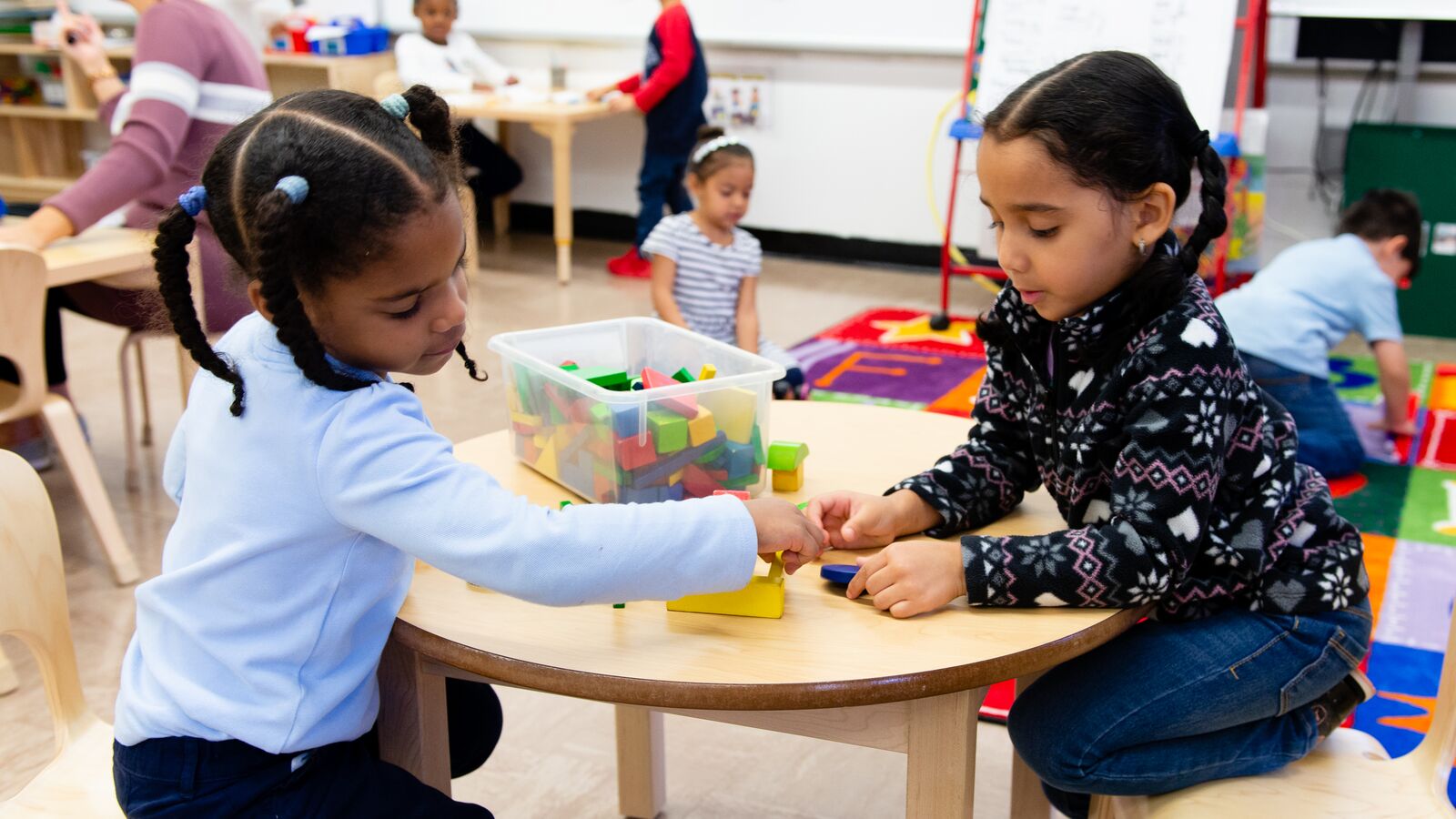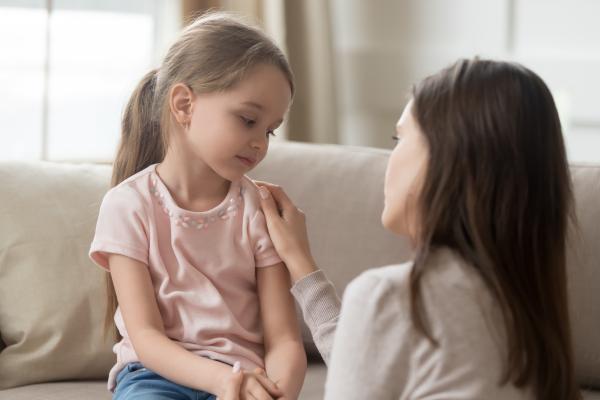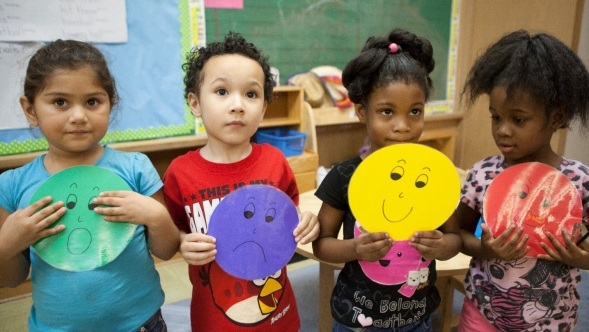
Social-emotional learning (SEL) is the process of developing self-awareness, self-regulation, and interpersonal skills that are important for school, work, and life success. Today there is widespread awareness about the importance of SEL but not many teachers know how to implement it. Before discussing some simple strategies for incorporating SEL, let’s address an important question first.
Why is SEL today important more than ever so?
Nearly 33% of teens will experience an anxiety disorder, according to the National Institutes of Health. Enabling children from a young age by introducing SEL early on is a great way to organically build coping mechanisms in them. Success as an individual is not just all about academic excellence. It is about thriving as an individual while making the most of the opportunities presented to them.

Students with exposure to SEL learning in classrooms or at home tend to do better than others and are successful and happy all-rounders. They develop emotional resilience that helps them tackle challenges better than others in careers and in life overall. This is because even early on, students learn to fight academic pressures better when equipped with SEL. We, in fact, love how cfchildren.org puts it. “SEL is a win-win for all. Children thrive. Schools win. Workplaces benefit. Society strengthens. All due to social-emotional learning.”
How can teachers and tutors incorporate Social Emotional Learning in classrooms?
Almost 60-70% of teachers complain that chunking out time for dedicated SEL-based lessons is the biggest challenge. There are a number of ways both traditional and offbeat, for teachers to incorporate social and emotional learning in classrooms. However, the best way is to make SEL an organic part of everyday teaching. We have outlined our top 5 ways to incorporate SEL in everyday teaching.
Whether you are a private tutor or a school teacher or even a parent homeschooling their child, you can try the following to incorporate social-emotional learning in your teaching routine with these 5 easy steps:
1. Do a daily check-in with your student
Conduct a daily check-in with your students. This should ideally be done at the very start of the day or your time with them. It can be a simple question like everyone must answer in one word about how are they feeling. Do this in a group and watch students gradually warm-up and share their true emotional state with the others. You’d also know how to deal with each child on that day based on their first reaction.

If the students are uncomfortable saying it out loud, ask them to just write it on a piece of paper daily and keep it with themselves. It is just important to teach them how to identify their true emotional state and then decide on how to cope with it or build on it. For example, if they are feeling extra hopeful, it may be a good day to try out something new. And if, they are feeling low, it is a good idea to take some time off for a quick nature walk or an extra ten minutes at the open gym.
You could even set up a ‘calm down corner’ in your classroom or make a ‘say it out’ diary where they can be themselves without any fear.
Bonus tip: Expand your students’ emotional vocabulary. It all starts with first being able to identify an emotional state before coping with it effectively. For example, instead of saying ‘upset’ they should use more specific and nuanced words for describing their emotional state. Combination words like, ‘dissatisfied’, ‘anxious’, ‘angry’, ‘feeling betrayed’, ‘feeling let down’, ‘feeling elated’, ‘unusually optimistic’, etc. should be introduced in their emotional vocabulary.
2. Find a trusted SEL curriculum that is all-inclusive
Look for a social-emotional learning curriculum that is backed by science and is easy to implement. Taking on any ambitious curriculum might in fact lead to fizzling out of your interest in due time. Instead, start with something that is verified and tested by the education experts. More specifically, look out for evidence-based social-emotional learning programs that you can implement at your end. This will remove the deterrent ambiguity and make it easier for you to integrate social-emotional learning in your teaching session(s).
Check out the CASEL norms for the right and effective SEL curriculum. You might also want to watch this small video to understand the basics of SEL as defined by CASEL.
3. Encourage lots of role-playing and taking turns
Role-playing is hugely helpful in teaching children how to think from others’ points of view (actively). For example, while teaching about the ills of bullying, role-plays can come in quite handy. Role-plays are one great way of teaching them how to be comfortable with different perspectives without being judgmental.

Try giving them a tricky life situation to simulate in a role-play. Give them roles in a manner that allows them to put themselves in each other’s shoes more often. If you are a tutor dealing with a child one-on-one, you too can participate in 2-person role plays with your student. For a quick headstart, you may want to try out these free role-playing character cards.
Also read: 5 Strategies for Engaging Students While Teaching
4. Teach empathy and demonstrate the difference it can make
Today more than 1 in 5 students report some sort of bullying encounters at school or otherwise. Clearly, empathy is amiss somewhere. SEL has its core in teaching empathy. Teach children kindness by asking them questions that encourage introspection and assessment of others’ feelings about their actions. This is especially effective after you’ve observed a child do something unacceptable. For example, if you spot an incident of bullying, ask them questions like,
- “What exactly prompted you to pull her hair?”
- “How would you feel if someone did that to your sibling?”
- “How do you think it made her feel when you pulled her hair?”
- “Wouldn’t you feel better if you apologized to her?”
Another simple trick used by many teachers is a kindness chant. Make all your students close their eyes for two minutes and visualize vividly a person that comes to their mind. Make them chant the following while thinking about that person,
“I pray they are safe, healthy, and happy at this moment and throughout. May their day be blessed.”
Here’s a bonus tip to teach empathy. Use mini-challenges to encourage alternative thinking. Reward the student if they come up with a coping strategy that is different from their previous strategies and is mindful and respectful of others.
5. Foster a growth mindset (start small by building self-awareness)
Lastly, foster a growth mindset in the children. A growth mindset describes a way of viewing challenges and setbacks. Children who have a growth mindset believe that even if they struggle with certain skills, their abilities aren’t set in stone. They think that with work, their skills can improve over time. This is applicable to all age groups – from elementary to high school. There is no right or wrong time to start building a growth mindset in children.
Set the conditions for social and emotional growth by helping students to cultivate a growth mindset. Give them challenging projects that involve utilizing or developing skills that are new to them. Design the homework in a way that they go out of their comfort zone to find answers. These simple things are a part of social-emotional learning and can help a child develop resilience over time when repeated through systematic in and after-school activities.
Some Notable Positive Effects of SEL
Research has shown some very interesting results about the magic social-emotional learning can do. Using SEL at school has been shown to reduce bullying by 51%, according to the American Journal of Preventive Medicine. The benefits are however manifold, it is not just limited to bettering certain behavioral issues, the benefits span better performance in sports and academics as well. Students who develop good confidence overall have shown about 50-60% better scores in math (on standardized tests). Other noticeable positive effects of social-emotional learning are:
- Reduction in instances of violence and verbal abuse at school
- Better compliance in general and more obedience from SEL learning can contribute to better personality development and academic achievements
- Betterment in literacy is another recorded direct positive effect of social-emotional learning. Students who benefit from an SEL curriculum score an average of 20% better in reading, according to the Journal of Research on Educational Effectiveness
- Better development overall as a human and happy childhood is the most important results of social-emotional learning. Learning how to regulate oneself and following a routine for self-improvement are directly linked to better physical health and self-concept
We hope these tips help you incorporate social-emotional learning in your interactions with children. Whether you are a school teacher, a private tutor or a parent, these actionable tips will help you actively incorporate SEL faster and better!
Explore PALO for bite-sized skill-building for middle school students that actually works.